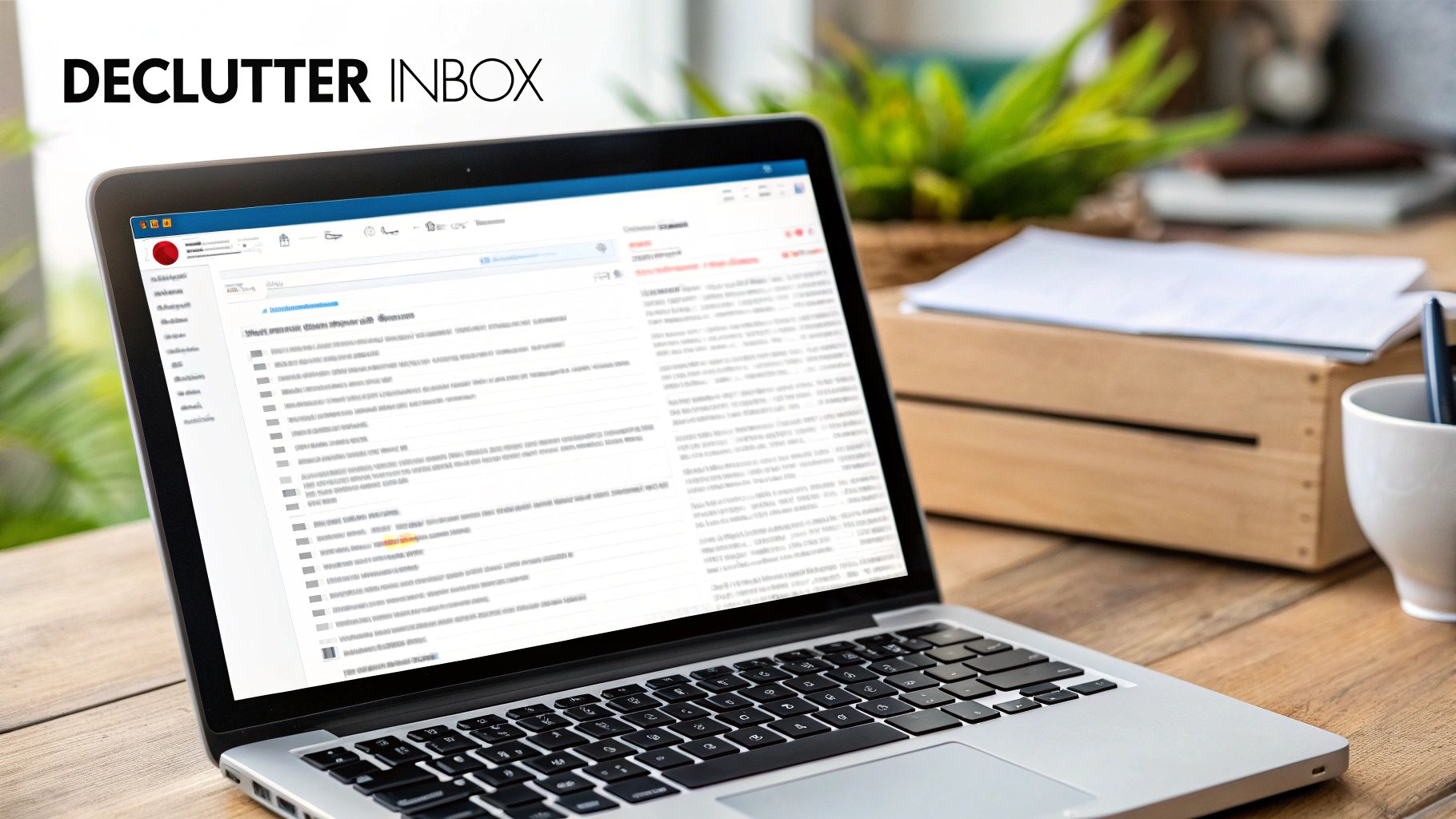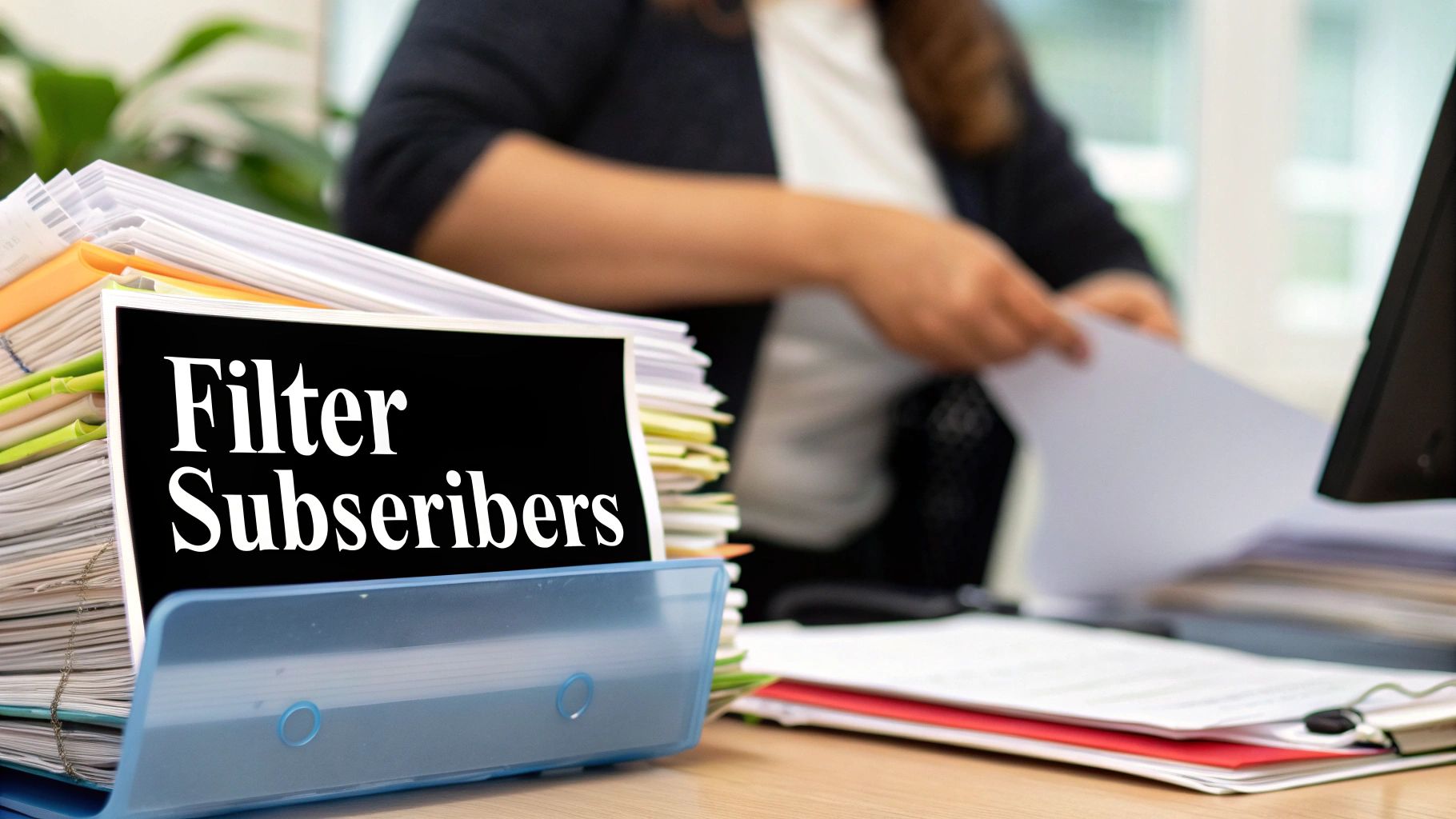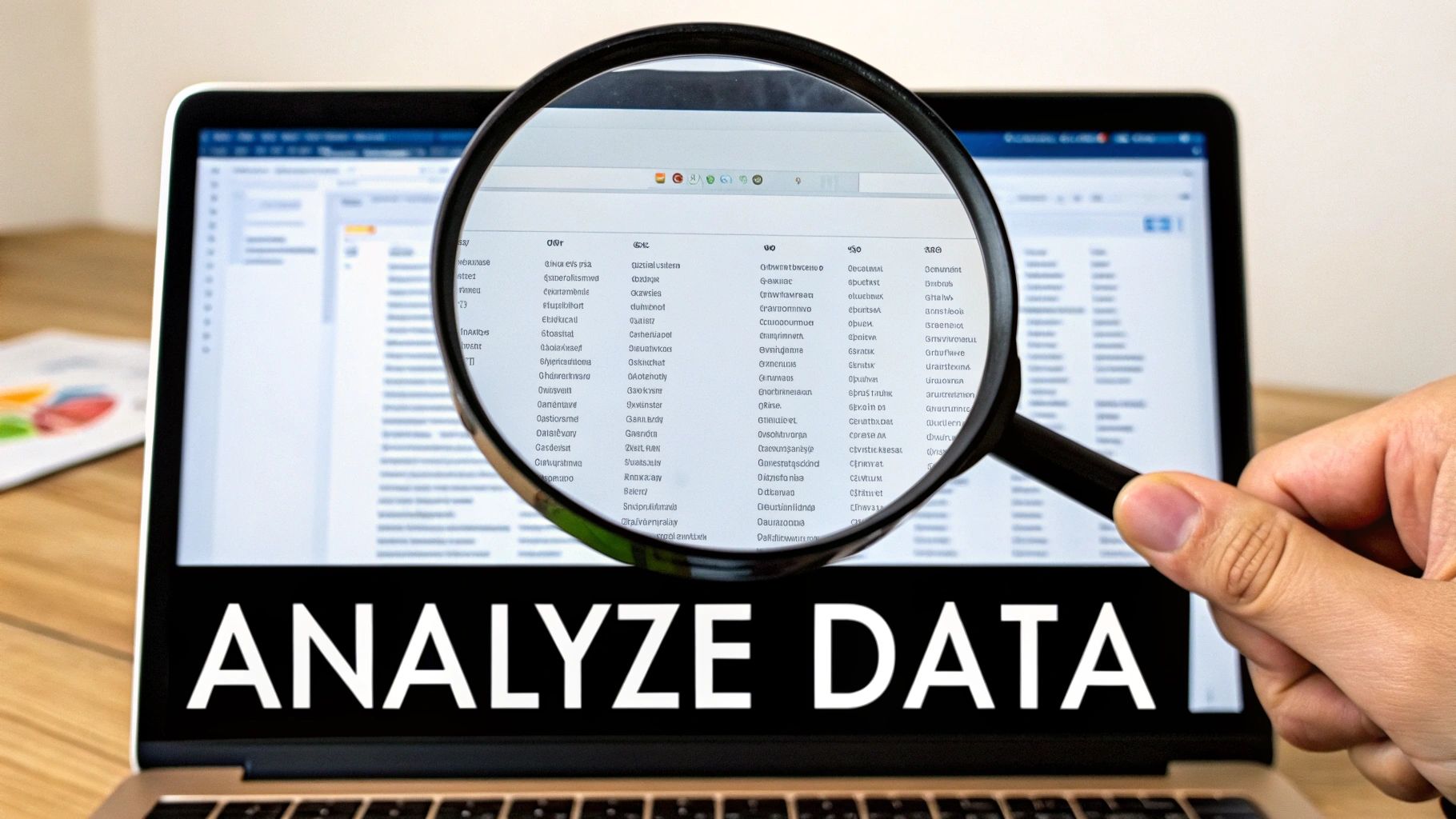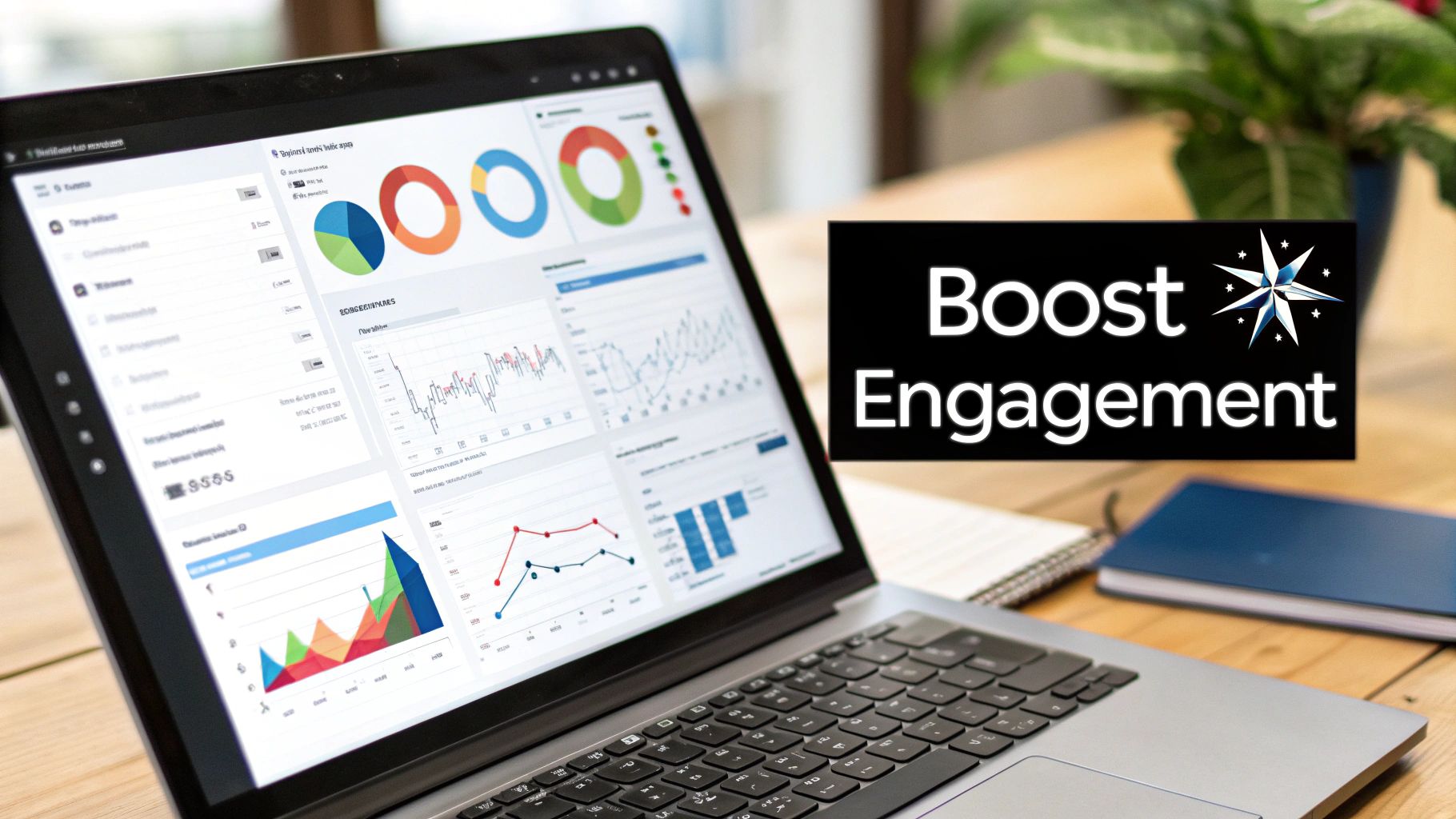Understanding Email List Decay and Its Hidden Impact
Your email marketing success depends on maintaining a high-quality contact list. But just like any database, email lists naturally lose accuracy over time through a process called email list decay. This happens when email addresses become invalid or inactive, quietly eroding your marketing effectiveness.
People regularly change jobs, abandon old email accounts, or update their contact details. Simple typos during signup can also create invalid addresses from the start. Research shows that email lists typically decay by 25% each year as contacts become outdated. Learn more about email list decay statistics
The Hidden Costs of Ignoring List Decay
When you neglect to clean your email list, it costs more than just wasted sends. A high bounce rate from invalid addresses damages your sender reputation with email providers. This can cause your messages to land in spam folders instead of inboxes, severely limiting your reach.
Poor deliverability means fewer people see your carefully written emails, reducing opportunities for sales and engagement. It can even impact other users on your email service as providers may penalize the entire sending domain. See our complete guide on email marketing best practices.
Proactive Strategies for List Hygiene
Smart marketers know that maintaining email list quality requires ongoing list hygiene. Regular cleaning to remove invalid and inactive subscribers is essential. This includes using verification tools to spot bad addresses and creating campaigns to re-engage inactive contacts.
Breaking your list into segments based on engagement helps customize your approach. Your most active subscribers might receive frequent updates and special offers, while less engaged contacts get targeted re-engagement messages or removal from your list. Taking these steps to fight list decay helps ensure your emails reach interested readers who want to hear from you.
Recognizing the Warning Signs of a Troubled Email List
A healthy email list is the foundation of successful email marketing. When issues start creeping in, they can quickly multiply if left unchecked. Here are the key warning signs that indicate your email list needs attention, along with practical steps you can take to address them.
Declining Engagement Rates
If you notice your open and click rates dropping significantly, it's time to take action. The standard industry benchmark for email open rates falls between 15-25%. When your metrics dip notably below these numbers, it signals that your content may no longer resonate with subscribers. Keep a close eye on these numbers and compare them to your industry averages to set realistic goals.
Increased Bounce Rates
Your sender reputation takes a hit when too many emails fail to deliver. A bounce rate exceeding 2% is a clear red flag that requires immediate investigation. High bounce rates often stem from outdated contact information or data entry errors. Consider using email verification tools to quickly spot and remove invalid addresses.
| Bounce Rate | Action Required |
|---|---|
| Below 2% | Maintain current practices |
| 2-5% | Investigate address validity |
| Above 5% | Urgent list cleaning needed |
Subscriber Behavior Changes
Watch out for sudden increases in unsubscribes or spam complaints. These often happen after changes in how often you send emails, shifts in content quality, or when subscriber expectations aren't met. Set up monitoring systems to catch unusual patterns early and respond quickly when issues arise.
Many successful email marketers use real-time tracking tools to spot potential problems before they grow. By setting clear performance goals based on your specific industry, you can maintain a robust and engaged subscriber base.
Regular monitoring and quick responses to these warning signs will help keep your email list strong and effective. Make it a habit to review your metrics regularly – this simple practice prevents small issues from becoming major roadblocks to your campaign success.
Mastering Essential List Cleaning Techniques
Email list cleaning goes beyond simply removing bounced emails. It requires understanding different subscriber issues and applying the right fixes for each case. By being strategic about cleaning your list, you can build a more engaged and responsive audience.
Identifying Problematic Subscribers
Several types of subscribers can hurt your email list's performance. Hard bounces happen when an email address is invalid – often due to typos or closed accounts. These need immediate removal. Soft bounces are temporary issues like full inboxes that need monitoring over time.
Here are the key problem areas to watch for:
- Hard Bounces: Invalid emails that will never work – remove these right away
- Soft Bounces: Temporary delivery failures that might resolve on their own
- Spam Traps: Fake emails used to catch spammers – getting caught in these damages your sender reputation
- Inactive Subscribers: People who haven't opened emails in 6+ months drag down engagement
The key is spotting these issues early. Learn more about managing different subscriber types in our guide to email categories.
Implementing Targeted Cleaning Strategies
Once you know what subscriber issues you're dealing with, you can use specific cleaning methods for each:
- Hard Bounce Removal: Set up automatic removal through your email platform
- Soft Bounce Management: Pause sending to addresses with repeated soft bounces
- Spam Trap Prevention: Use double opt-in and regular list cleaning
- Re-engagement Campaigns: Send personalized "we miss you" emails to inactive subscribers before removing them
Balancing Cleaning with Subscriber Retention
While removing problem subscribers is important, you also need to keep your engaged subscribers happy. Smart segmentation is key – group subscribers by engagement level so you can treat each group differently.
Consider adding a sunset policy that gradually reduces emails to inactive subscribers until they either re-engage or get removed. This respects subscriber preferences and prevents spam complaints. You can also let subscribers choose what types of emails they want and how often they want them. When you combine these approaches, you build a cleaner, more engaged list that gets better results.
Choosing Your List Cleaning Approach: Manual Vs. Automated Solutions
The right email list cleaning strategy is crucial for any email campaign. Whether you opt for manual review, automated tools, or combine both methods, understanding each approach helps you make an informed choice for your needs.
Manual Email List Cleaning: A Hands-On Approach
Manual list cleaning means personally reviewing your subscriber list and spotting problematic emails. This works best with smaller, high-value lists where individual attention matters. For example, when managing a select group of VIP clients, manual cleaning lets you carefully assess each contact and reach out personally if needed.
- Benefits: Full control over removal decisions, enables personalized re-engagement
- Drawbacks: Takes significant time, more error-prone, doesn't scale well
Automated Email List Cleaning: Efficiency at Scale
Software tools can quickly scan and clean your email lists by finding invalid or inactive addresses. This is ideal for larger lists that would be impractical to review manually. These systems efficiently detect hard bounces and flag potential issues based on subscriber engagement patterns.
- Benefits: Quick processing, handles large lists easily, reduces human error
- Drawbacks: Less nuanced than manual review, requires choosing reliable tools
Hybrid Approach: Getting the Best of Both Worlds
Many email marketers use a hybrid method that blends automated scanning with manual oversight. This typically means using tools for initial cleaning, then personally reviewing flagged accounts or specific segments. For instance, let automation handle bounced emails, then manually check inactive subscribers to plan targeted re-engagement.
| Feature | Manual Cleaning | Automated Cleaning | Hybrid Approach |
|---|---|---|---|
| Cost | Low | Variable | Moderate |
| Time | High | Low | Moderate |
| Accuracy | Moderate | High | High |
| Scalability | Low | High | High |
| Personalization | High | Low | Moderate |
Your ideal approach depends on your specific situation. Key factors include list size, available budget, and desired level of personal touch. Finding the right mix of manual and automated cleaning can boost your email marketing results and create sustainable list maintenance practices. For more guidance on building strong email lists, check out our resources at EmailAddress.ai.
Building a Sustainable List Hygiene Strategy
Just like regular home maintenance, keeping your email list clean requires ongoing attention and care. Creating a solid list hygiene strategy helps prevent issues before they start. Think of it as a basic habit – like brushing your teeth daily rather than waiting for problems to develop.
Establishing Effective Cleaning Schedules
The ideal cleaning frequency depends on your list size and industry needs. As a general guideline, do a full list cleaning at least twice per year. For certain segments like new subscribers or inactive contacts, monthly checks can help spot potential problems early. For more details, check out EmailAddress.ai's author sitemap.
Training Your Team in Best Practices
Good list hygiene needs everyone's participation. Make sure your email marketing team understands proper list cleaning methods and follows consistent procedures. Clear written guidelines and regular team training sessions keep everyone aligned on best practices for data entry, bounce handling, and unsubscribe management.
Creating Accountability Systems
Make list hygiene a priority by assigning clear ownership. Define who's responsible for different aspects of list management. Keep track of key metrics like bounce rates and spam complaints to measure progress and quickly address any issues that arise.
Practical Workflows and Documentation
Create standard step-by-step processes for common tasks like checking new subscribers or managing bounced emails. Document these workflows clearly to ensure consistency and reduce mistakes. Simple checklists make it easy for team members to follow proper procedures.
Scaling Your List Hygiene Efforts
As your subscriber base grows, maintaining quality becomes even more important. Use email verification services to validate new subscribers automatically. Set up rules to handle bounces and unsubscribes. While automation helps, human oversight remains crucial – regularly review automated processes and adjust as needed. This balanced approach creates an effective, sustainable strategy for long-term email marketing success.
Measuring Success and Proving ROI
Email list cleaning is a valuable investment that goes beyond basic maintenance. Understanding its true value requires tracking specific metrics and showing clear return on investment (ROI). Here's how to measure success and demonstrate the impact to your stakeholders.
Identifying the Metrics That Matter
Different businesses focus on different success metrics. For example, e-commerce companies often prioritize conversion rate improvements, while lead generation teams may care more about email deliverability rates.
Here are the key metrics to monitor after cleaning your email list:
- Deliverability Rate: Track how many emails reach inboxes instead of spam folders
- Bounce Rate: Monitor invalid addresses – aim for less than 2% bounces
- Open Rate: Measure if your subject lines resonate with engaged subscribers
- Click-Through Rate (CTR): See if email content drives more clicks and engagement
- Conversion Rate: Count how many subscribers take desired actions
- Spam Complaint Rate: Check if fewer people mark emails as spam
- Unsubscribe Rate: Watch for drops in unsubscribes after removing inactive contacts
Calculating the ROI of Email List Cleaning
To determine ROI, compare your cleaning costs against both immediate and long-term benefits. For instance, lower bounce rates can quickly boost sender reputation, while sustained engagement lifts revenue over time.
Follow these steps to calculate ROI:
- Add up cleaning costs: Include any tools and services used
- Measure the benefits: Quantify improvements in key metrics and revenue
- Calculate ROI: (Benefits – Cost) / Cost x 100%
Communicating Your Results
Present your findings using clear charts and graphs to show the positive impact on key metrics. Create a focused report highlighting the ROI and major improvements. For more resources on email marketing strategy, check out EmailAddress.ai's sitemap.
When you track the right metrics and share results effectively, you can clearly demonstrate the value of email list cleaning to your team.
Ready to clean your email list? EmailAddress.ai provides advanced verification to help you build a more engaged subscriber base and boost ROI. Learn more at EmailAddress.ai.





